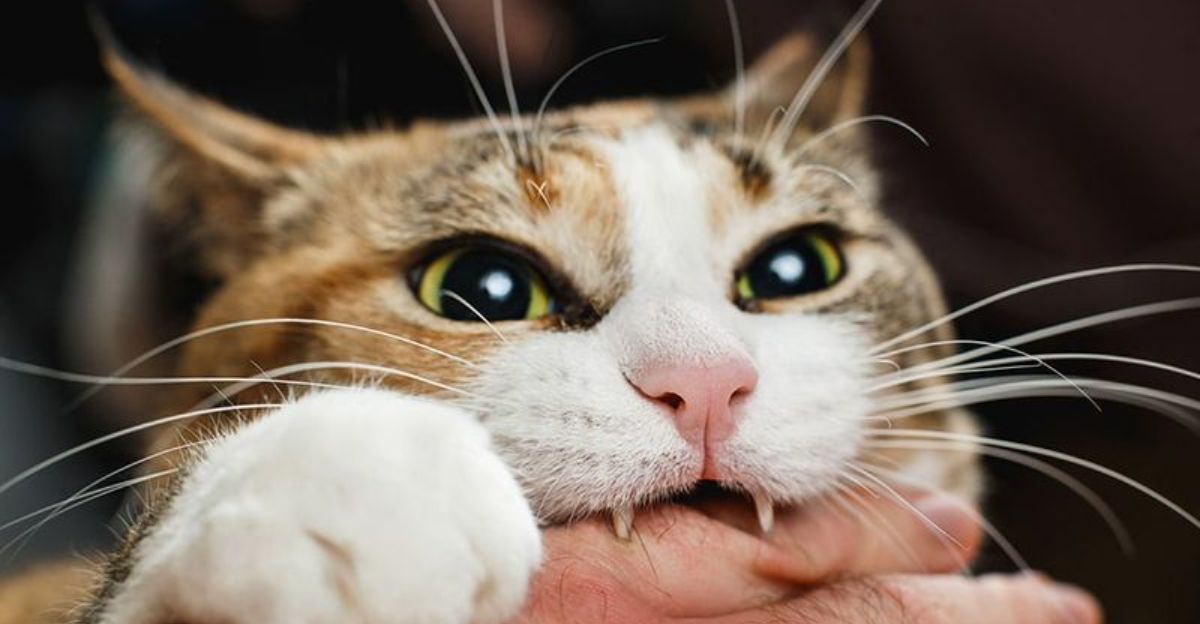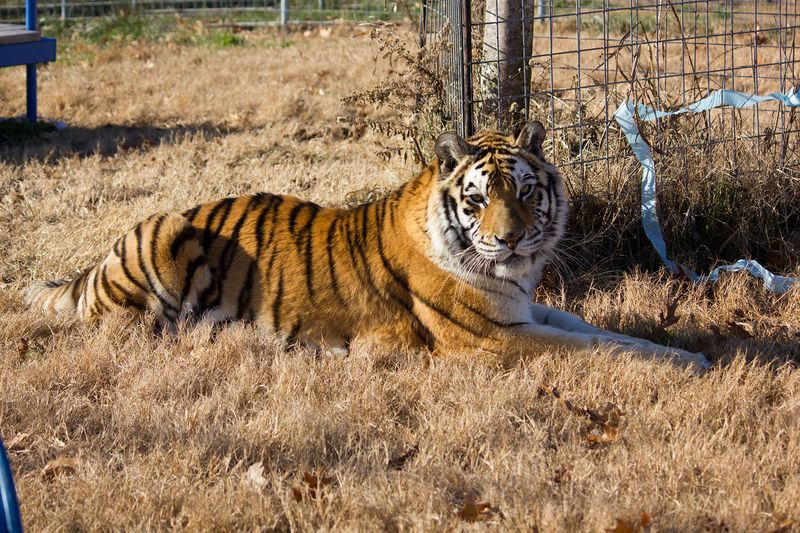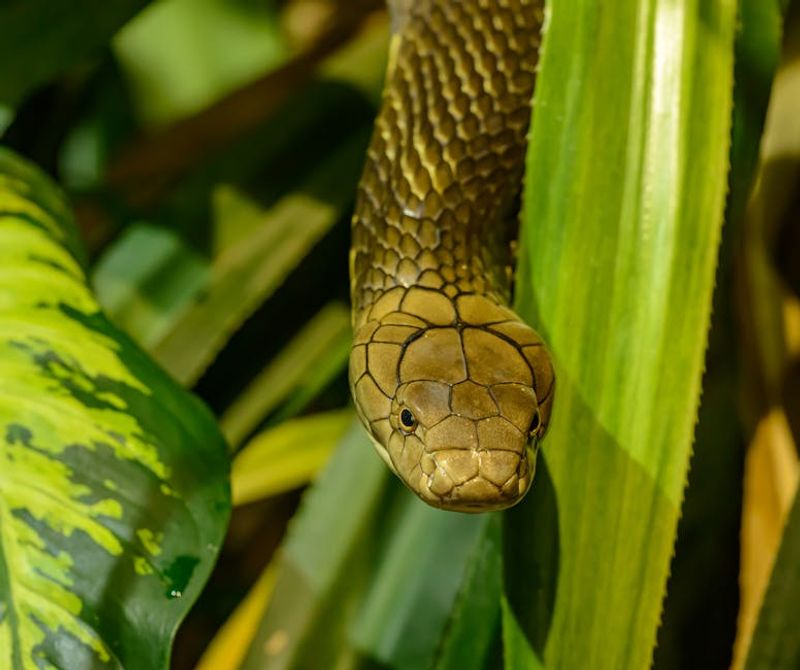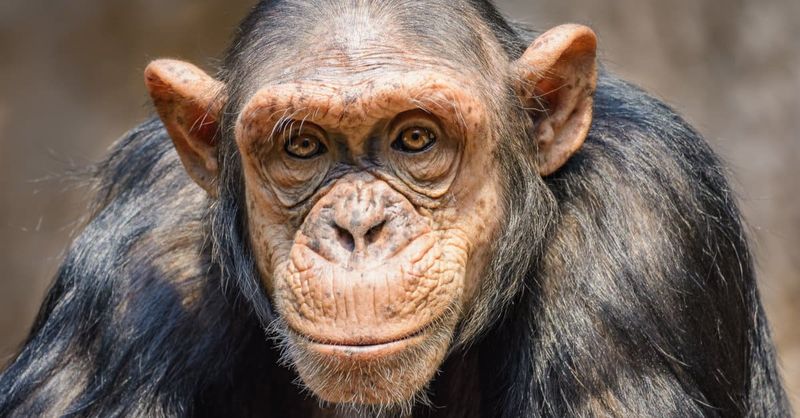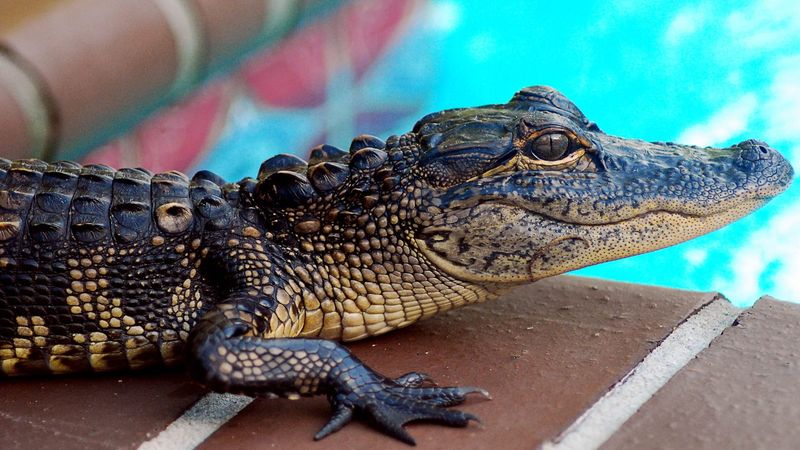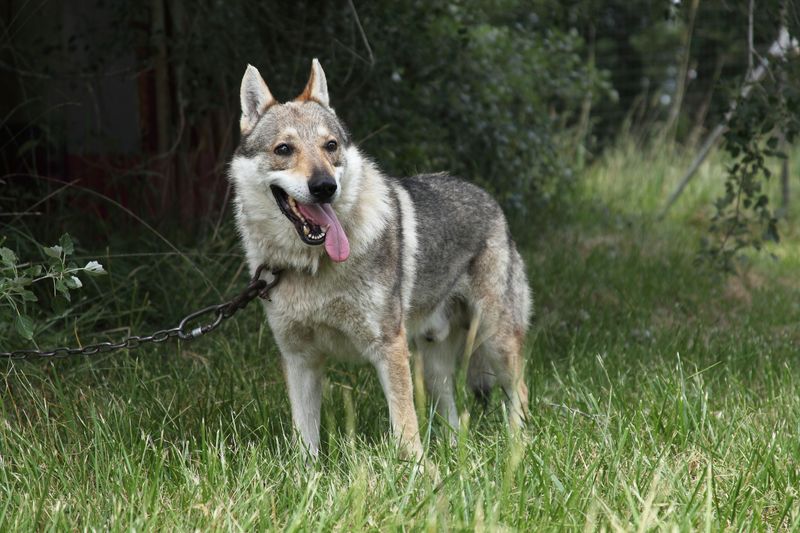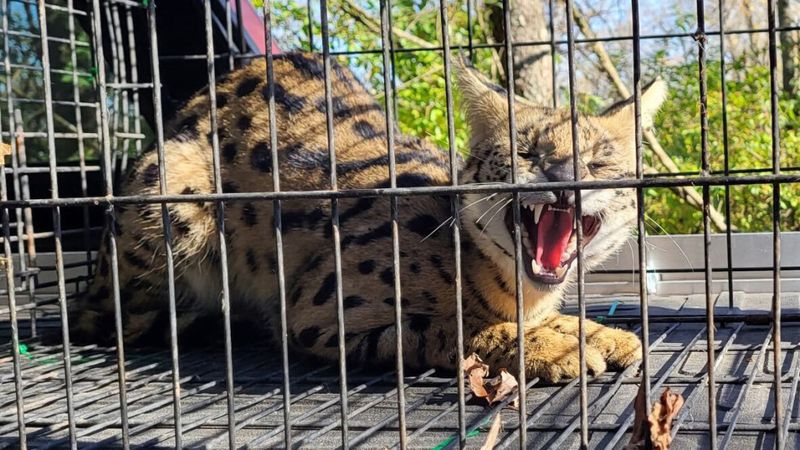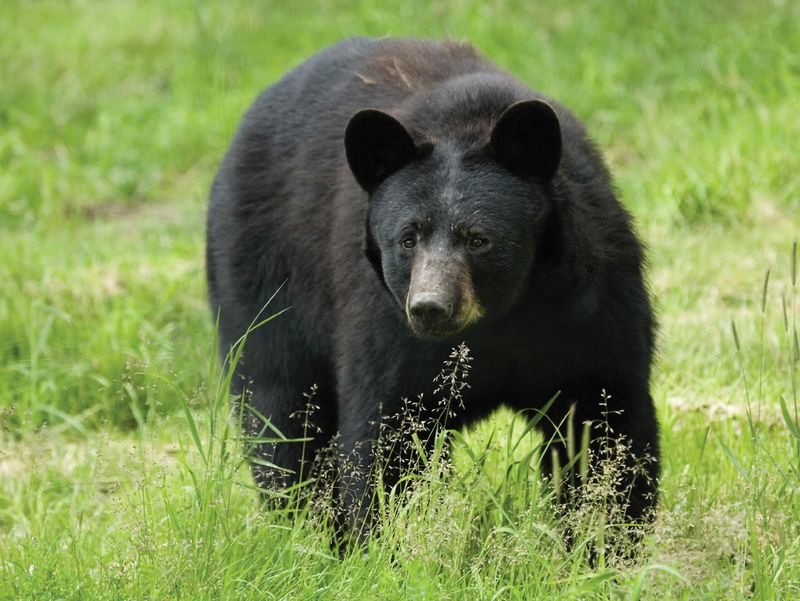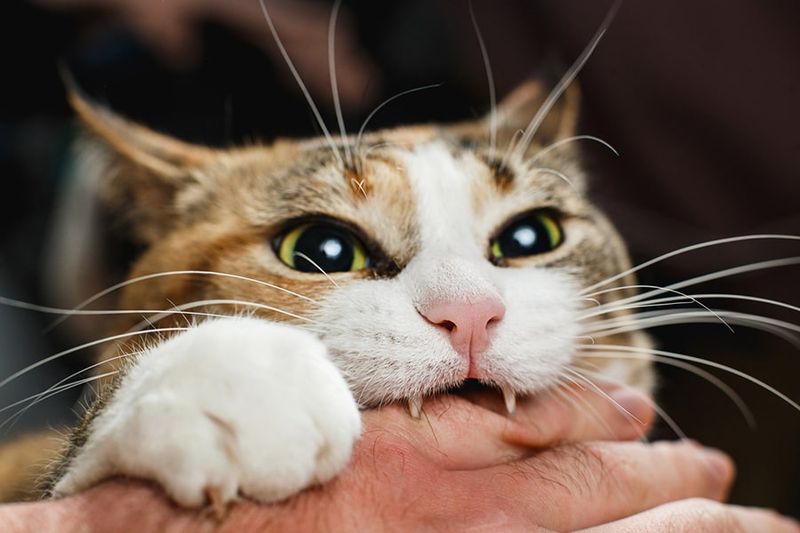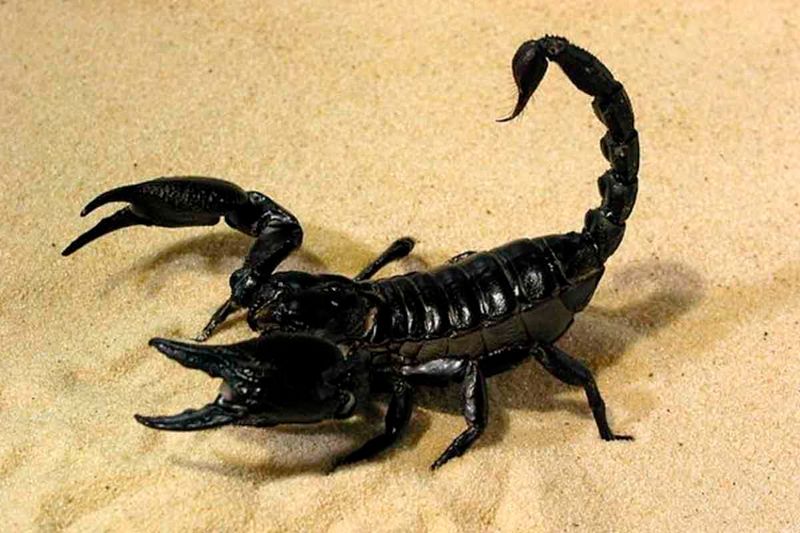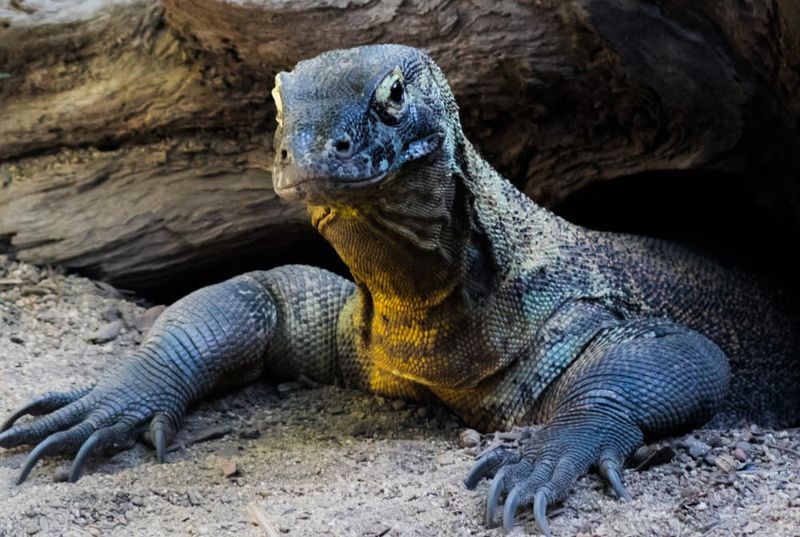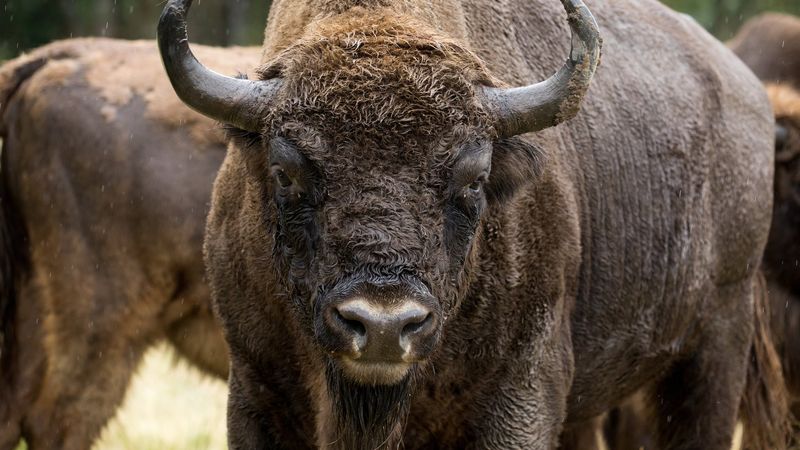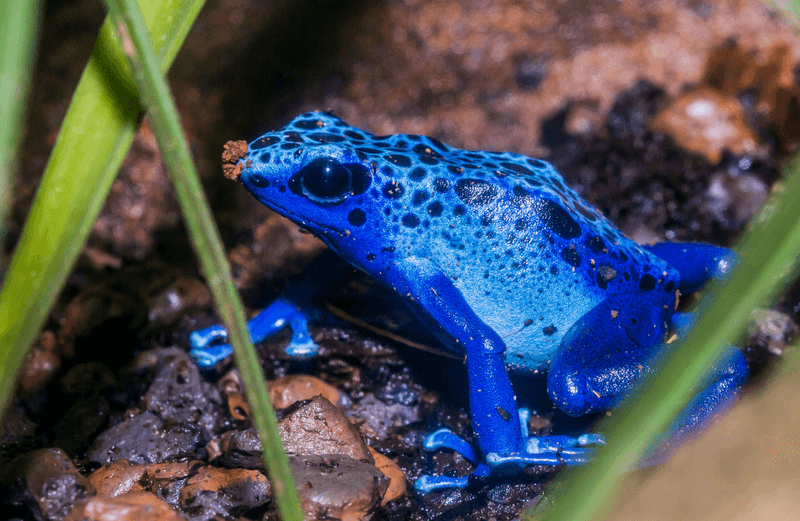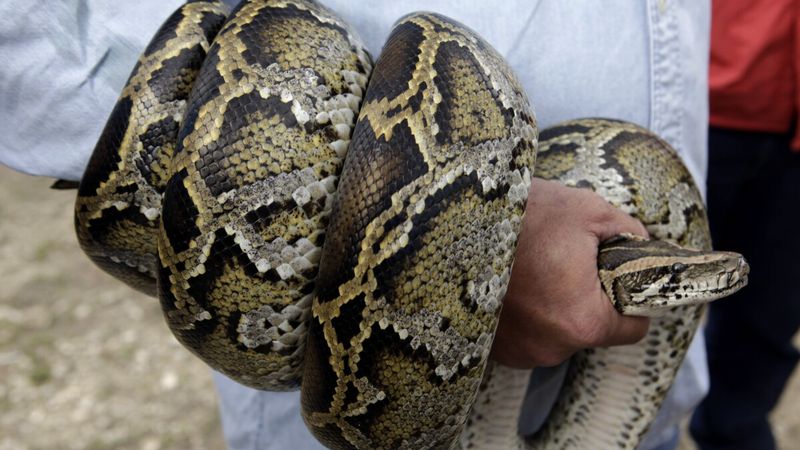📖 Table of Content:
Many pet owners go beyond the typical cats and dogs, seeking out exotic and potentially dangerous animals to keep at home. These unusual pet choices often come with serious risks to the owner, their family, and even the community. From venomous reptiles to powerful predators, these animals retain their wild instincts despite domestication attempts.
1. Tigers
Large cats weighing up to 600 pounds roam backyards and basements in some American homes. Private tiger ownership remains legal in some states despite the obvious dangers these apex predators pose. Even raised from cubs, tigers retain their hunting instincts.
Owners often underestimate the strength, territorial nature, and unpredictability of these massive felines. A single swipe can cause devastating injuries. Their dietary needs are expensive too – an adult tiger consumes roughly 15 pounds of meat daily.
Many tiger owners eventually surrender their pets when they become unmanageable, creating problems for sanctuaries already at capacity.
2. Venomous Snakes
Snake enthusiasts sometimes graduate from harmless species to keeping cobras, vipers, and other venomous varieties. A single bite can deliver enough venom to cause severe tissue damage, organ failure, or death. Emergency antivenom may not be readily available at local hospitals.
Escapes happen more frequently than owners like to admit. Venomous snakes can slither through tiny openings and remain hidden for weeks. This poses serious dangers to unsuspecting family members and neighbors.
Specialized knowledge, secure enclosures, and proper handling tools are essential but often overlooked by amateur keepers seeking the thrill of dangerous reptiles.
3. Chimpanzees
Baby chimps appear adorable and human-like, convincing some people they’ll make good companions. The reality turns dangerous when these primates reach adolescence around age seven. Adult chimps possess several times the strength of humans and can become unpredictably aggressive.
Notorious incidents have resulted in severe maulings, with victims suffering disfigurement and life-threatening injuries. Their intelligence makes them masters at escaping enclosures. Chimps require specialized diets, extensive socialization, and environments that few private owners can provide.
Former pet chimps often spend decades in sanctuaries, psychologically damaged from inappropriate upbringing in human homes.
4. Alligators and Crocodiles
Cute as hatchlings, these reptiles quickly grow into powerful predators with bone-crushing bite force. Some owners release them into local waterways when they become unmanageable, creating ecological havoc and public safety threats.
Housing requirements become increasingly complex and expensive as they grow. Adult alligators require heated pools, specialized diets, and secure enclosures that few homes can accommodate. Their primitive brains don’t form bonds with humans.
Despite their seemingly sluggish appearance, crocodilians can move with surprising speed when striking. Numerous owners have suffered serious injuries from pets they thought were docile or trained.
5. Wolf Hybrids
Wolf-dog crosses combine the power and instincts of wild wolves with the familiarity of domestic dogs. This unpredictable mix creates animals that may behave like pets one moment and wild predators the next. Territorial aggression typically emerges during sexual maturity.
These animals require specialized containment systems as they excel at digging, climbing, and problem-solving to escape. Many communities have banned wolf hybrids following attacks on humans and other animals.
The sad reality is that thousands of wolf-dogs are euthanized yearly when owners discover they cannot manage their wild behaviors. Even experienced dog handlers find themselves overwhelmed by these animals.
6. Serval Cats
Wild African servals have become fashionable pets among those seeking exotic alternatives to domestic cats. Their striking spotted coats and slender builds make them visually appealing, but these 40-pound felines retain their wild hunting instincts and territorial behaviors.
Servals can jump over 9 feet high from a standing position, making containment challenging. Their specialized dietary needs include whole prey animals, not simply cat food. Marking territory with urine is a natural behavior that creates household havoc.
When frustrated or threatened, servals deliver powerful bites and use their long claws effectively. Most veterinarians lack the training to treat these exotic cats when health issues arise.
7. Black Bears
Bear cubs appear irresistibly cuddly, leading some to illegally adopt these powerful omnivores. The cute factor quickly fades as they reach hundreds of pounds within two years. Even hand-raised bears maintain wild instincts that make them dangerous companions.
Their immense strength allows them to easily destroy household structures. Bears naturally explore with their mouths, leading to accidental bites that can crush bones. Proper nutrition requires diverse diets that are expensive and difficult to provide.
Most pet bears end up in wildlife sanctuaries or euthanized after causing injuries. The psychological impact of captivity often results in stereotypical behaviors like pacing and self-harm.
8. Domestic Cats
Common housecats might seem harmless compared to other animals on this list, but they can present significant dangers. Cat scratch disease affects thousands annually, sometimes causing serious complications requiring hospitalization. Their bacteria-laden bites frequently become infected.
Feline aggression often emerges without warning. Redirected aggression occurs when a cat becomes aroused by one stimulus but attacks something else entirely – often an unsuspecting owner. Toxoplasmosis from cat feces poses risks to pregnant women and immunocompromised individuals.
Outdoor cats decimate local wildlife populations, killing billions of birds and mammals annually. This ecological impact makes them one of the most destructive invasive species worldwide.
9. Venomous Scorpions
Exotic pet enthusiasts sometimes keep deadly scorpion species like the deathstalker or emperor scorpion. Their venom can cause extreme pain, neurological symptoms, and potentially death. Children and elderly individuals face higher risks from stings.
Escapees pose serious household dangers as these arachnids can hide in shoes, bedding, or clothing. Their small size makes recapture extremely difficult. Breeding populations can establish if multiple scorpions escape.
Proper handling requires specialized tools and knowledge that casual owners often lack. Scorpions require specific temperature and humidity conditions that fluctuate seasonally. The medical community in many regions isn’t prepared to treat exotic scorpion envenomations.
10. Komodo Dragons
These massive lizards reach lengths of 10 feet and weights exceeding 150 pounds. Their mouths harbor deadly bacteria that cause septic infections in bite victims. Few private owners can provide the massive specialized enclosures these reptiles require.
Komodo dragons possess surprising intelligence and can recognize their keepers, but this doesn’t translate to domestication. Their powerful tails deliver whip-like blows capable of breaking bones. Young specimens move with alarming speed and agility.
Legal ownership typically requires special permits, yet black market specimens still make their way into private collections. The specialized veterinary care these endangered lizards need remains largely unavailable outside of major zoological institutions.
11. Bison
North America’s largest land mammals appear docile but can charge at 35 mph with little warning. Weighing up to 2,000 pounds, these seemingly gentle giants cause numerous injuries to ranchers and tourists annually. Some hobby farmers keep them as alternative livestock or novelty pets.
Bison require extensive pasture space and specialized fencing that few private properties can accommodate. Their powerful horns and hooves become lethal weapons when they feel threatened. Mothers with calves display particularly aggressive protective behaviors.
Domestication attempts have largely failed despite centuries of effort. Bison retain their wild temperament regardless of being born in captivity, making them perpetually dangerous to handle.
12. Poison Dart Frogs
Brilliantly colored amphibians from South American rainforests contain some of the most potent toxins known. Wild specimens produce enough poison to kill multiple humans. While captive-bred frogs lack the toxic diet that creates their poisons, they can still absorb and secrete harmful chemicals from their environment.
Their delicate skin makes handling dangerous for both the owner and the frog. These amphibians require precise humidity and temperature conditions that mimic rainforest microclimates. Specialized diets of live insects must be maintained year-round.
Escapes can introduce non-native species to local ecosystems. The small size of these frogs makes them nearly impossible to recover if they escape their terrariums.
13. Large Constrictor Snakes
Reticulated pythons and anacondas can exceed 20 feet in length and weigh over 200 pounds. These massive constrictors have caused fatalities by asphyxiating their owners during handling sessions. Even smaller specimens require multiple handlers for safe management.
Housing adult constrictors demands room-sized enclosures with robust security features. Their strength allows them to break through standard glass terrariums. Feeding requires whole rabbits or pigs, making maintenance expensive and logistically challenging.
Released or escaped specimens have established invasive populations in Florida, demonstrating their adaptability. Proper veterinary care becomes increasingly difficult to find as these snakes grow to their full size.
